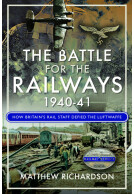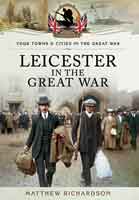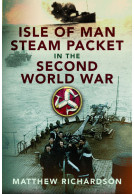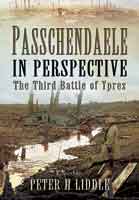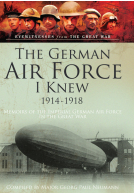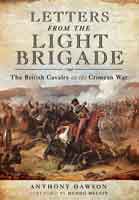1914 (Paperback)
Voices from the Battlefields
Imprint: Pen & Sword Military
Pages: 304
Illustrations: 100 colour and black and white illustrations
ISBN: 9781399074711
Published: 2nd September 2022
(click here for international delivery rates)
Need a currency converter? Check XE.com for live rates
| Other formats available | Price |
|---|---|
| 1914 Hardback Add to Basket | £25.00 |
| 1914 ePub (65.5 MB) Add to Basket | £6.99 |
The opening battles on the Western Front marked a watershed in military history. A dramatic, almost Napoleonic war of movement quickly gave way to static, attritional warfare in which modern weaponry had forced the combatants to take to the earth. Some of the last cavalry charges took place in the same theatre in which armoured cars, motorcycles and aeroplanes were beginning to make their presence felt.
These dramatic developments were recorded in graphic detail by soldiers who were eyewitnesses to them. There is a freshness and immediacy to their accounts which Matthew Richardson exploits in this thoroughgoing reassessment of the 1914 campaign.
His vivid narrative emphasises the perspective of the private soldiers and the junior officers of the British Army, the men at the sharp end of the fighting.
This title has full colour plates containing over 100 illustrations.
Britain At War Magazine Book of the Month February 2014
I went into this book expecting just another collection of accounts but have actually been quite impressed with this publication. If you want an account of the early days on the western front then this book would make a fine introduction to the period.
Great War IPMS Newsletter, Cher Ami - December 2022
As Featured In
Cher Ami, Great War Special Interest Group Newsletter - July 2022
Overall, this book is one to get a hold of if you are looking to get a feel for the personal experience in battle, in the early months of the war.
Jon Sandison
Incredible book, a rare masterpiece.
Amazon Customer Review: Thomas M. Magee
This book is excellent. It really puts you there. The author's research is incredible. The book is about the first five months of the war for the British Army. The author tells the story of the battles almost exclusively from first person accounts. The realism, grit, agony, exhaustion and more from the accounts makes the battles come alive in fierce detail. The story puts you there through the landing, the battle of Mons, the retreat, and to the famous Christmas armistice. You will feel like you are on the march yourself from these accounts.
The downside and why I gave it four stars is the overall account. It is easy to get lost in what was happening if you aren't really up on the events. However that adds to the realism. Soldiers rarely know the "big" picture. Life is the next hill, the next meal, the next position. People need to read this for the realism. I hope it goes down as a classic. I think it is just as good as Tuchman's Guns of August. Everyone needs to read it.
Reading real stories from the actual soldiers' experiences,on both sides, is absolutely fascinating.
Amazon Customer 5* Review
First-hand accounts are always of great value, more so usually than the interpretations of historians. In [i/]1914 Voices from the Battlefields[i] the author has thankfully refrained from adding little more than a few lines to provide context and continuity. This is certainly a book I will dip into time and time again.
The History Herald
In this fine book Matthew Richardson has pulled together many accounts of the opening stages of the war. But this is not just a collection of soundbites; the book has been thoroughly researched to give the reader an introduction (albeit a brief one) to the events being described.
WW1 Geek - Andrew Arnold
Drawing on many of the well-known, and lesser-known, accounts of the war, Richardson assuredly weaves his narrative with the accounts of men fighting for all the major protagonists. Their stories speak for themselves but Richardson has carefully selected them to provide a balanced account of the battles. Reading them adds an extra dimension to these events, bringing them to life.
The book is well-researched – no surprise given that the author is the ex-curator of the Liddle archive. It is copiously and relevantly illustrated with carefully sourced pictures and maps, and whilst the veracity of some of the sources is not explored, this is pretty much as close as we can now get to understanding the war from the soldiers’ perspective.
They were the oldest of elderly men in crisp Sunday suits with clanking medals when I was a schoolboy in Christchurch, New Zealand. That was in the 1980s, and even then the fabled Mons star and bar was a rarity among veterans of the First World War.
Great War Forum
Now they – the heroes of Mons, Marne and Aisne – are all gone; their stories are confined quite literally to the pages of history.
One such is the just-released volume by Matthew Richardson, titled 1914: Voices from the Battlefields (Pen & Sword Military). This beautiful-looking, narrative-driven book packs a punch both in content and hard-cover production quality; it’s not one of those flimsy paperbacks that falls apart after a single engagement.
From page to page you will find hundreds of first-hand accounts that the author has rounded up from a legion of sources.
One of the major failings of military historians is their chronic inability to consider both sides of the hill. That is, giving both the British and German versions of events. Richardson has not fallen into that trap, and his book is all the better for being able to compare eyewitness accounts of numerous actions from the viewpoints multiple protagonists. There is plenty of material that has not seen circulation before, which is very refreshing.
As an outsider looking in my impression is that Richardson has let the soldiers do the talking, transporting the reader back to the gruelling first days, weeks and months of the First World War. Their words are, by turns, engaging, horrifying, saddening and, at times, humorous. Richardson sets these against the cloth of sparing battle overviews and tactical summaries.
As a professional author and military historian, my brief rests on the Western Front, 1916–17. Being a New Zealander, I will also confess to more than a passing interest in Gallipoli, 1915. My interest in the fighting of 1914, then, is seated in my few encounters with those of the Old Contemptible Association and distant family members who were present at the onset of hostilities.
That is, if I am going to buy, let alone read, a book about the British-German encounters in 1914 it will need to help me better understand what the soldiers I either knew, or knew of, had likely experienced, beyond that I had already learned. To this end, I was pleased to find detailed references to the 19th (Queen Alexandria’s Own Royal) Hussars, the Dorsetshire Regiment, and the Duke of Wellington’s Regiment.
The acid test rests not only in content, but also in layout, footnotes, indexing and bibliography. Military history books can be evaluated on these factors alone. From Richardson’s bibliography one can see he has done the graft, tracking down old tomes and long-forgotten magazines and journals, whether in English language or German.
The footnoting appears comprehensive, reflects the way in which the source material is presented, and stands up to a random accuracy check against the books on my sagging shelf. Indexing follows a formula that will suit the general reader and, to a reasonable extent, maps the subject matter in depth. Detailed references for trenches, graves, machine guns, artillery and so forth exist. Qualitative subjects such as command, morale, and death are not indexed.
Photographs throughout are pleasing on the eye, including a mix of more recent colour snaps and decades-old portraits of soldiers. It is obvious that Richardson has taken time to select his images; they yield unwritten insights to the accompanying text. For instance, the large photograph of the bandaged Musketier Helmuth Schreiner, Infanterie Regiment 24, speaks volumes. His tunic is dishevelled, his sling is an adapted woollen scarf, and his facial expressions reveal a young man who has seen far too much.
The maps are easy to use and not overcrowded with superfluous detail. Each locates the soldiers who are quoted in the body copy of the book.
If there was one brickbat it would be that the subeditor (as opposed to Richardson) could have been more particular with their treatment of certain grammatical matters. The general reader, however, will almost certainly not notice these errors.
This year and the next few out to 2018 will see a deluge of military titles appearing on the market, many of questionable quality at best. Richardson’s latest endeavour is not one of those in any sense, and in terms of content and presentation it is a book I can recommend for readers who have both general and detailed interests in the events of 1914. I know that it will certainly be of use in my future studies in the area of 1914.
A fine collection of personal accounts...a good number of which have not been published before.
Britain at War
About Matthew Richardson
Matthew Richardson is Curator of Social History at Manx National Heritage. He has a long-term interest in military history and has published several outstanding books on the subject including 1914: Voices from the Battlefields, The Hunger War: Food, Rations and Rationing 1914-1918 and Eyewitness on the Somme 1916. He also has a keen interest in the history of the Isle of Man TT and, in addition to producing several acclaimed exhibitions on this subject, worked with Dave Molyneux on The Racer’s Edge: Memoirs of an Isle of Man TT Legend.
About Peter Liddle
Former teacher, lecturer and founder/director of two archives on the world wars of the twentieth century, Peter Liddle is a well-published historian of personal experience in those wars with books on
Gallipoli, The Somme and D-Day. He is dedicated to the preservation of the evidence of the past and has particularly enjoyed drawing together in publications and conferences the research of others in the field..
He has a lifetime of interest in sport, history travel and wildlife. He lives with his wife, Louise, in Rawdon, Leeds. He is Life President of The Second World War Experience Centre.











